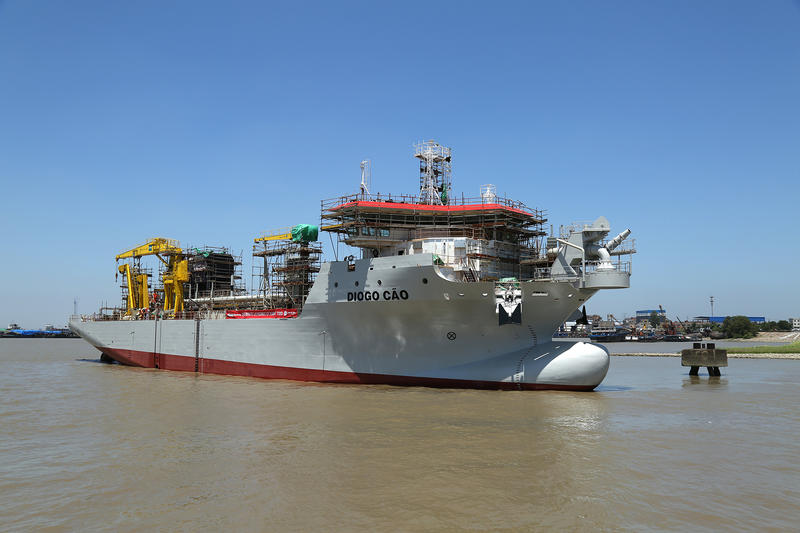The first of six ultra-low emission trailing suction hopper dredges (TSHD) being built for Jan De Nul Group was launched at the Keppel Nantong shipyard in China, a subsidiary of Keppel Offshore & Marine. Diogo Cão is the second of three 3,500-cubic-meter (4,577-cubic-yard) hopper dredges to be launched. Jan De Nul has also ordered two 6,000-cubic-meter (7,847-cubic-yard) dredges and a larger vessel at 18,000 cubic meters (23,543 cubic yards).
All six vessels are powered by diesel-electric and equipped with a two-stage exhaust gas filter system, complying with the European Stage V regulations for inland waterway vessels emissions that are set to go into effect in 2020. The Stage V regulations are stricter than those of the International Maritime Organization Tier III regulations.
The new vessels will operate with ultra-low sulfur gasoline, with the exhaust gas treated in two stages by a Selective Catalytic Reduction (SCR) system, and a Diesel Particulate Filter (DPF). The SCR system lowers NOx to achieve European Stage V levels for inland waterways. The second stage DPF removes particulates from the exhaust, also down to the future Stage V levels.
The design of the Diogo Cão is based on the 3,400-cubic-meter (4,447-cubic-yard) TSHD Alvar Nuñez Cabeça de Vaca and Sebastiano Caboto, built in 2011. The vessels combine a shallow draft with high maneuverability, making them suitable for working in confined areas.
All major drives of the Diogo Cão are electrically driven and controlled by frequency converters enabling each system to operate at its optimal speed and power. Power is generated by three diesel generator sets. A control system automatically starts and stops the sets depending on the power requirement. The vessel has a trailing pump power of 1250 kW and discharging pump power of 3,000 kW. It is 89.3 meters (293 feet) in length with a maximum dredging depth of 27.6 meters (90.6 feet) and speed of 11.3 kn.



